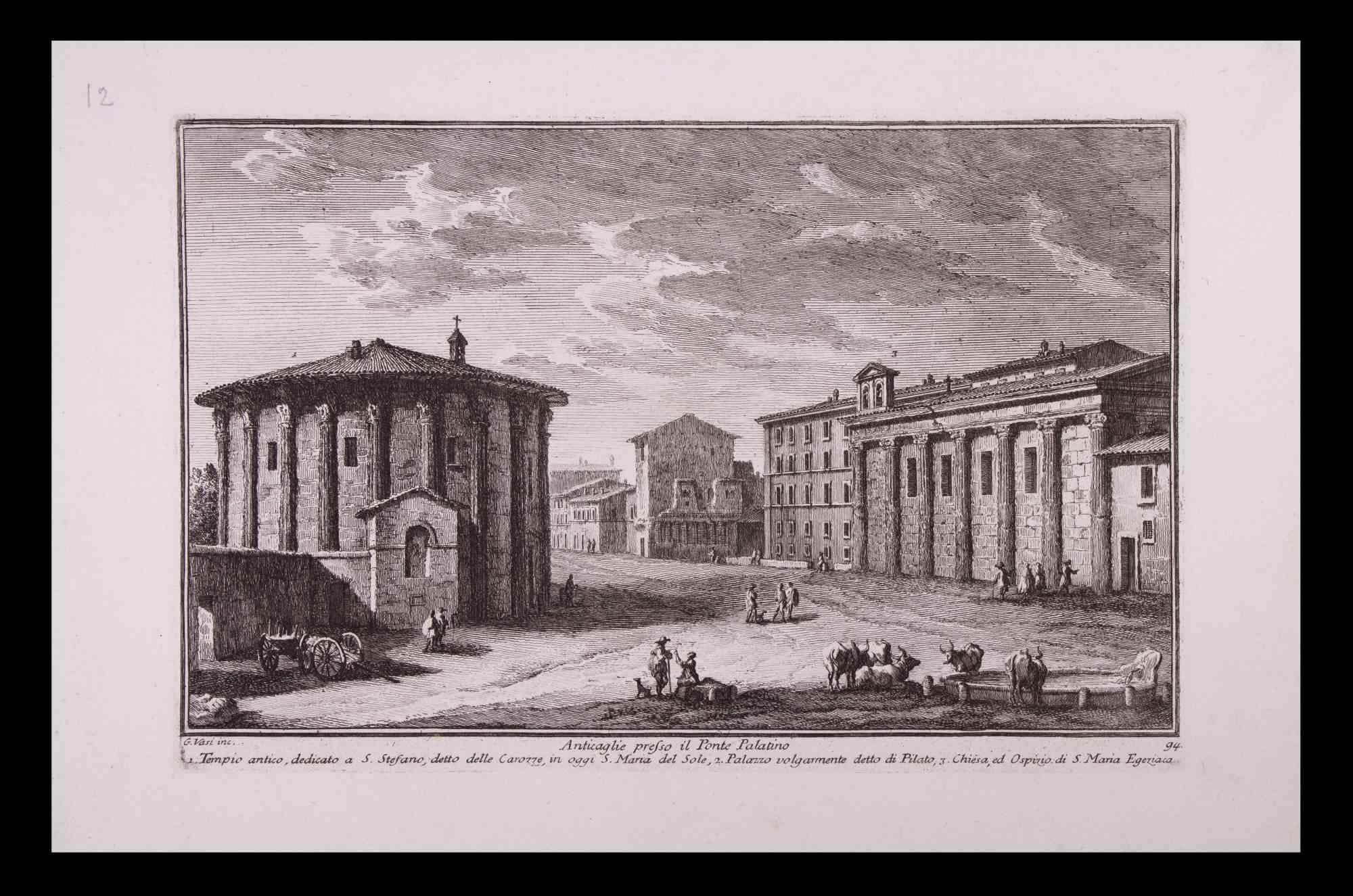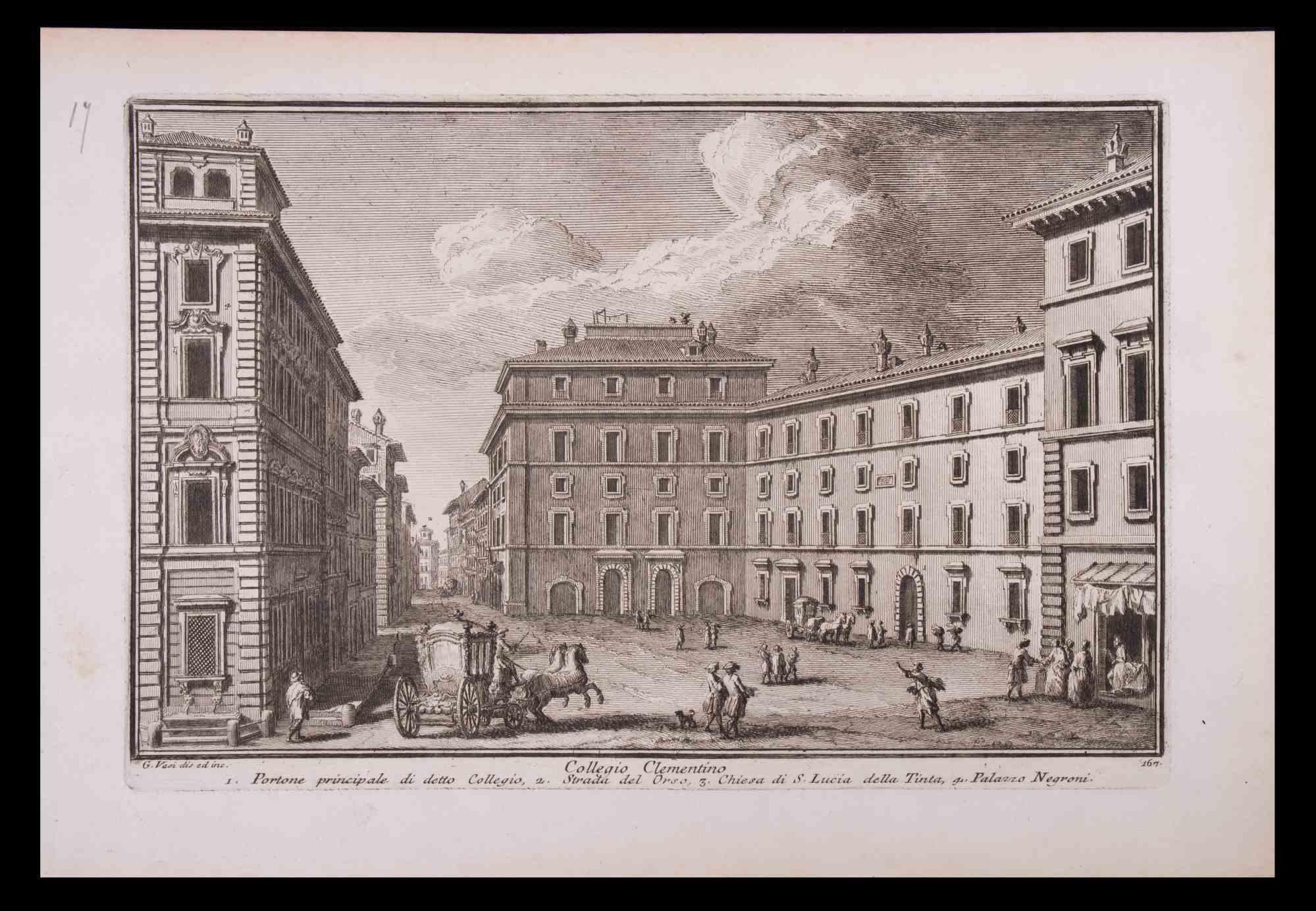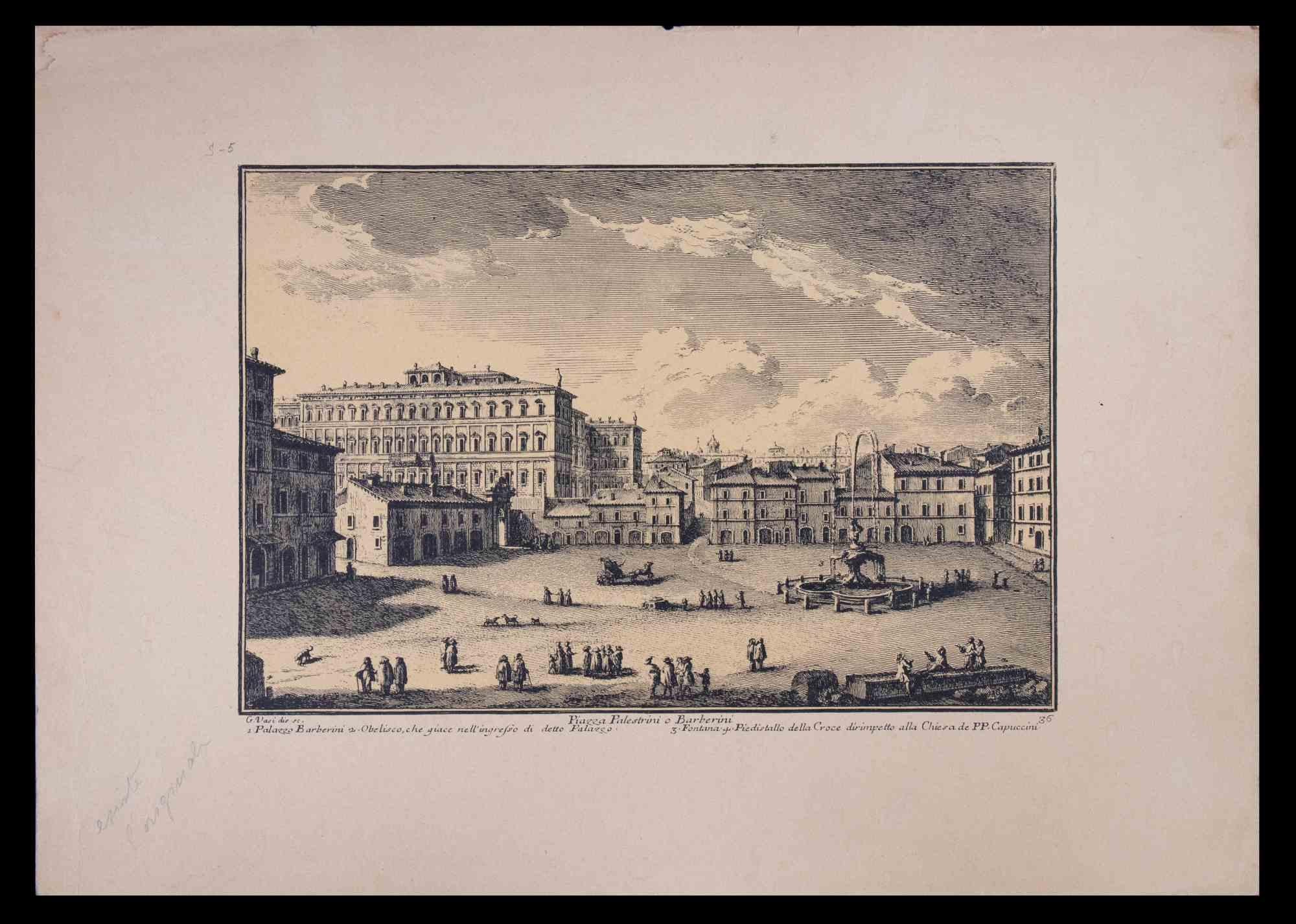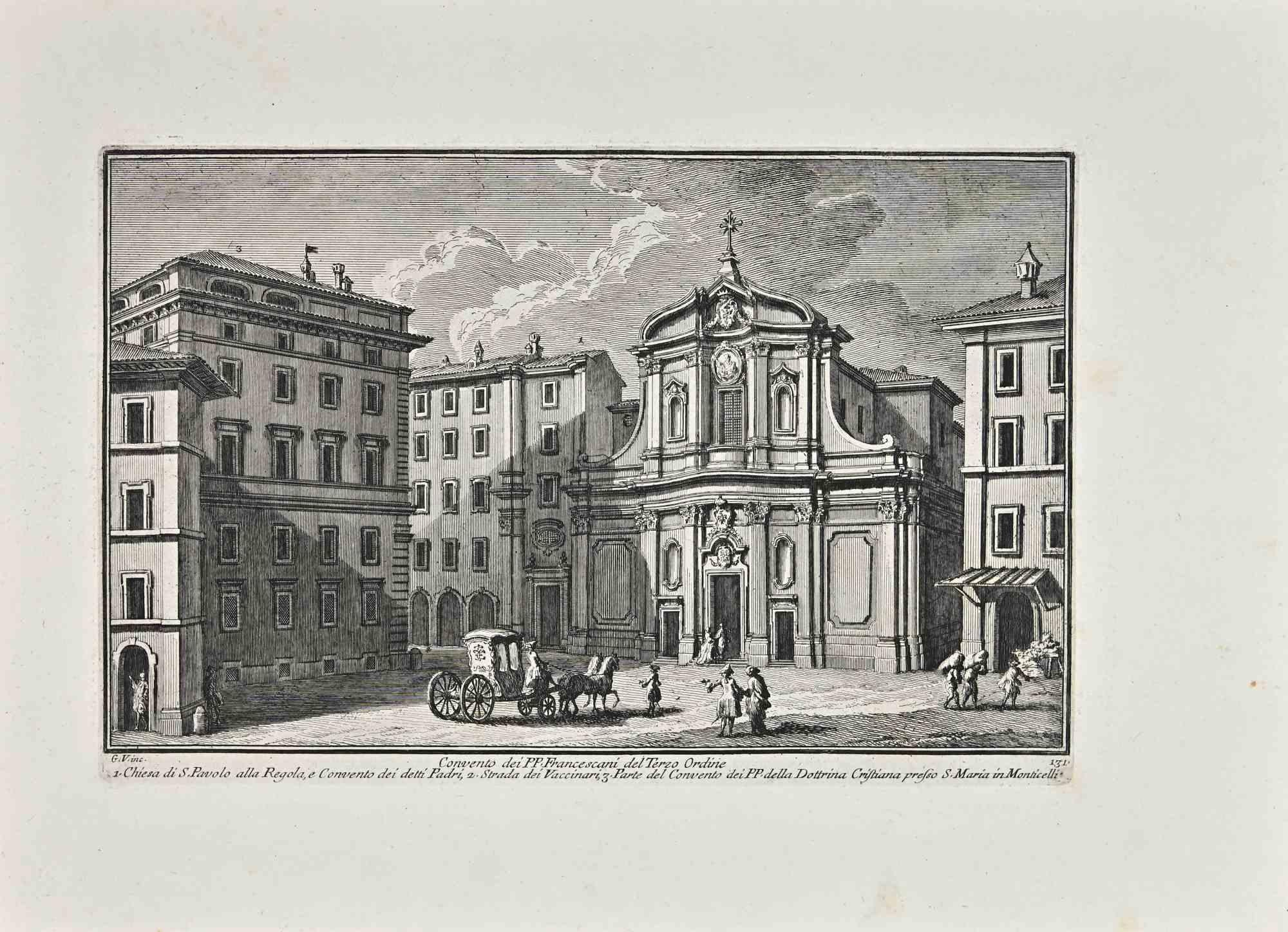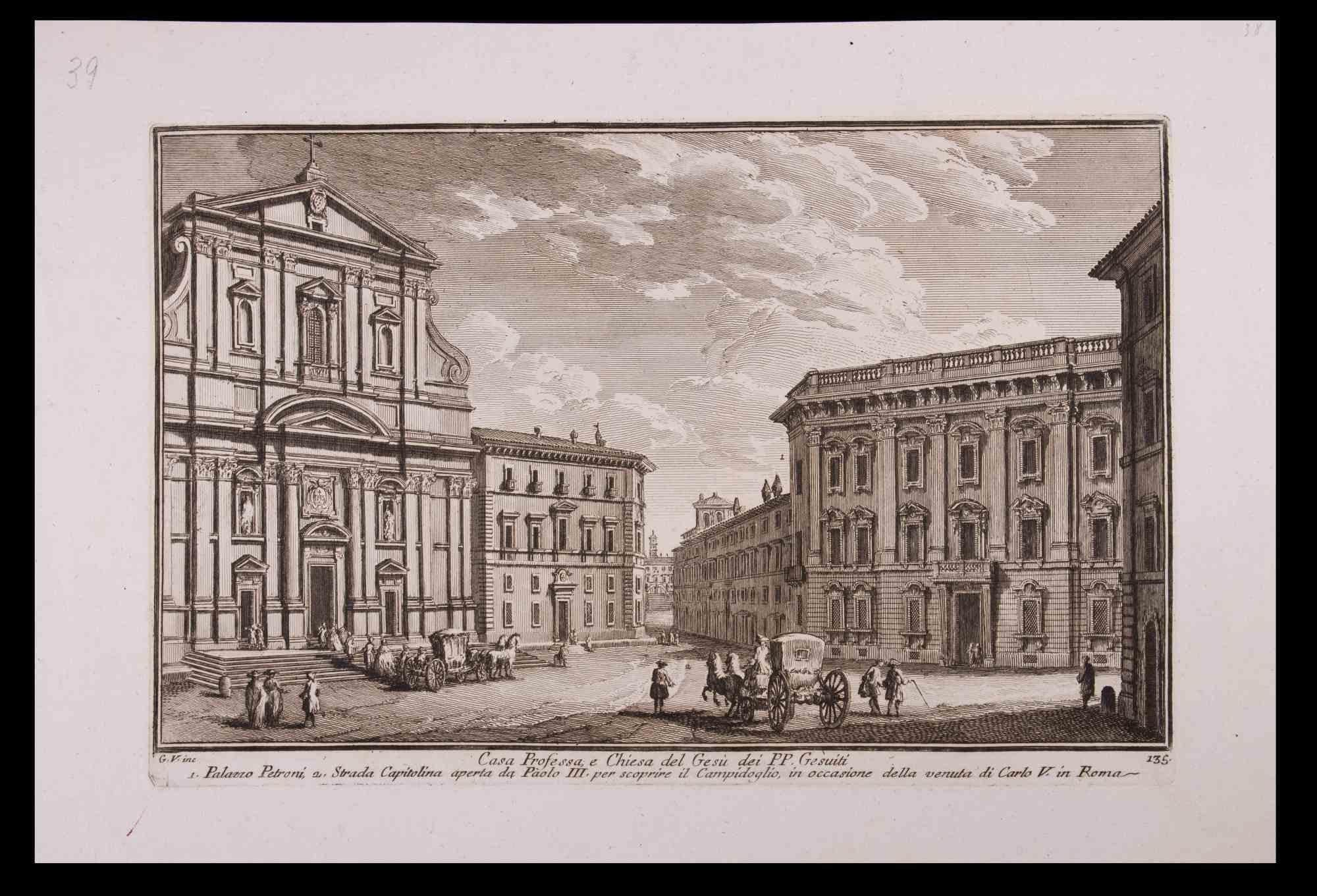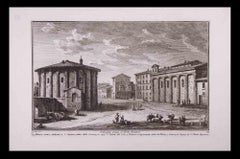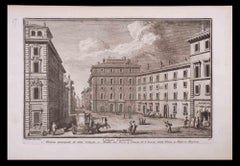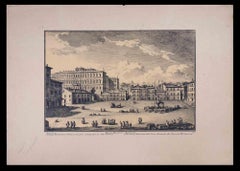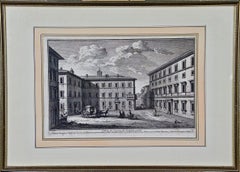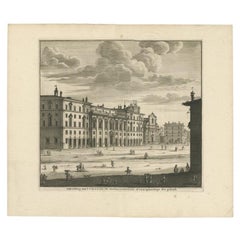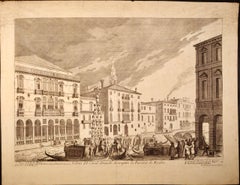Items Similar to Al Dolo - Etching by Giovanni Antonio Canal - 1735/44
Want more images or videos?
Request additional images or videos from the seller
1 of 9
Giovanni Antonio Canal (Canaletto)Al Dolo - Etching by Giovanni Antonio Canal - 1735/44 1735/44
1735/44
$35,768.56
£26,499.14
€30,000
CA$49,001.13
A$54,370.89
CHF 28,480.64
MX$666,733.05
NOK 362,263.94
SEK 341,961.71
DKK 228,203.39
Shipping
Retrieving quote...The 1stDibs Promise:
Authenticity Guarantee,
Money-Back Guarantee,
24-Hour Cancellation
About the Item
Al Dolo is an original Artwork realized by Giovanni Antonio Canal, commonly known as Canaletto (Venice, 1697 - 1768).
Original Etching on Laid paper, 1735-1744.
The work is from the series " VEDUTE. Altre prese da i Luoghi altre ideate da ANTONIO CANAL e da esso intagliate […]".
II state of four (accordind to Montecuccoli), II state of three (accordind to Bromberg), I state of two (according to De Vesme).
Ref. and Prov.: P. Prouté, Catalogue Papety, 1982, n.148
Exceptional sheet, with fresh impression and beards.
On the left bank of the Brenta, facing the church of Dolo dedicated to S.Rocco, stands the Palladian villa Zanon-Bon, formerly called Andruzzi. Nearby, two squeri (boat-sheds) partially hidden by trees. Beside them the waterway which joins the locks at Dolo with the Brenta is indicated by the wharf with logs and the corner house with escutcheon and low stone wall. Across the background, three acquimoli (water-mills). Beyond them, buildings and a tower. On the river bed in the foreground, two men are occupied with a tub and bucket. A row of briccole (mooring posts) defines the navigable zone of the river.
Dimensions: mm 294 x 429.
Inscriptions: on the lower left corner “ A. Canal f. ”, on the center “ Al Dolo ”.
Reference :
A.De Vesme, Le peintre-graveur italien , Milan, 1906, n. 4.
D. Succi (a cura di), Canaletto & Visentini. Venezia e Londra, Cittadella/Venezia, Bertoncello/Tedeschi, 1986, n. 70.
R. Bromberg, Canaletto's etchings, revised and enlarged edition of the catalogue raisonné , San Francisco, Alan Wofsy, 1993, n. 4.
F. Montecuccoli Degli Erri, Canaletto Incisore , Venezia, Istituto Veneto di Scienze, Lettere ed Arti, 2002, pp. 232-233, n. 4.
In the title of the series to which this etching belongs, the artist distinguishes between places taken from life and others created: the description is never accurated but lives on a free and extraordinarily personal interpretation of the objective data. Canaletto's gaze is a modern gaze, which interprets reality by restoring a serene world, made up of thousand details, genre scenes and modulated by light. Originally the series was to consist of thirty etchings, but the artist divided three of the plates into several parts, increasing the number to 35. At the time of the edition, however, only 31 were chosen, published both in volume and individually; it is not possible to reconstruct the sequence, but probably the smaller plates were engraved first and then the larger ones, such as Al Dolo.
Giovanni Antonio Canal (Venice, 1697 – 1768),commonly known as Canaletto , was an Italian painter from the Republic of Venice, considered important member of the 18th-century Venetian school. Painter of city views or vedute, of Venice, Rome, and London, he also painted imaginary views (referred to as capricci), although the demarcation in his works between the real and the imaginary is never quite clearcut. He was further an important printmaker using the etching technique. In the period from 1746 to 1756 he worked in England where he painted many views of London and other sites including Warwick Castle and Alnwick Castle. He was highly successful in England, thanks to the British merchant and connoisseur Joseph "Consul" Smith, whose large collection of Canaletto's works was sold to King George III in 1762.
- Creator:Giovanni Antonio Canal (Canaletto) (1697 - 1768, Italian)
- Creation Year:1735/44
- Dimensions:Height: 11.82 in (30 cm)Width: 17.01 in (43.2 cm)Depth: 0.04 in (1 mm)
- Medium:
- Movement & Style:
- Period:1730-1739
- Condition:Insurance may be requested by customers as additional service, contact us for more information.
- Gallery Location:Roma, IT
- Reference Number:Seller: J-782141stDibs: LU650310830722
About the Seller
4.9
Platinum Seller
Premium sellers with a 4.7+ rating and 24-hour response times
1stDibs seller since 2017
7,598 sales on 1stDibs
Typical response time: 2 hours
- ShippingRetrieving quote...Shipping from: Grasse, France
- Return Policy
Authenticity Guarantee
In the unlikely event there’s an issue with an item’s authenticity, contact us within 1 year for a full refund. DetailsMoney-Back Guarantee
If your item is not as described, is damaged in transit, or does not arrive, contact us within 7 days for a full refund. Details24-Hour Cancellation
You have a 24-hour grace period in which to reconsider your purchase, with no questions asked.Vetted Professional Sellers
Our world-class sellers must adhere to strict standards for service and quality, maintaining the integrity of our listings.Price-Match Guarantee
If you find that a seller listed the same item for a lower price elsewhere, we’ll match it.Trusted Global Delivery
Our best-in-class carrier network provides specialized shipping options worldwide, including custom delivery.More From This Seller
View AllAnticaglie Preso Il Ponte Palatino - Etching by G. Vasi - Late 18th Century
By Giuseppe Vasi
Located in Roma, IT
Anticaglie Preso Il Ponte Palatino is an original black and white etching of the Late 18th century realized by Giuseppe Vasi.
Signed and titled on plate lowe...
Category
Late 18th Century Old Masters Figurative Prints
Materials
Etching
Collegio Clementino - Etching by Giuseppe Vasi - Late 18th Century
By Giuseppe Vasi
Located in Roma, IT
Collegio Clementino is an original black and white etching of the Late 18th century realized by Giuseppe Vasi.
The beautiful etching represents a glimpse of Rome.
Signed and titled...
Category
Late 18th Century Old Masters Figurative Prints
Materials
Etching
Palazzo Barberini - Etching by Giuseppe Vasi - Late 18th Century
By Giuseppe Vasi
Located in Roma, IT
Palazzo Barberini is an original black and white etching of the Late 18th century realized by Giuseppe Vasi.
The beautiful etching represents a glimpse of Rome.
Signed and titled o...
Category
Late 18th Century Old Masters Figurative Prints
Materials
Etching
Convento di PP. Francescani del Terzo - Etching by Giuseppe Vasi - 18th century
By Giuseppe Vasi
Located in Roma, IT
Convento di PP. Francescani del Terzo Ordine is an original etching of the Late 18th century realized by Giuseppe Vasi.
Signed and titled on plate lower margin.
Good conditions.
...
Category
18th Century Modern Figurative Prints
Materials
Etching
Palazzo Barberini - Etching by Giuseppe Vasi - Late 18th Century
By Giuseppe Vasi
Located in Roma, IT
Palazzo Barberini is an original black and white etching of the Late 18th century realized by Giuseppe Vasi.
The beautiful etching represents a glimpse of Rome.
Signed and titled o...
Category
Late 18th Century Old Masters Figurative Prints
Materials
Etching
Palazzo Rospigliosi - Etching by Giuseppe Vasi - Late 18th Century
By Giuseppe Vasi
Located in Roma, IT
Palazzo Rospigliosi is an original black and white etching of the Late 18th century realized by Giuseppe Vasi.
Signed and titled on plate lower margin.
Good conditions and aged ma...
Category
Late 18th Century Old Masters Figurative Prints
Materials
Etching
You May Also Like
Giovanni Antonio Canal 'Canaletto' Etching of Prato Della, Venice, 1697-1768
By Giovanni Antonio Canal (Canaletto)
Located in Oklahoma City, OK
Lovely etching on paper in back ink by Giovanni Antonio Canal (Canaletto).
Measurements:
22" x 15"
Hand-numbered in pencil at the bottom right with the number 6.
Part of a co...
Category
Antique 18th Century Italian Rococo Prints
Materials
Paper
$3,480 Sale Price
20% Off
18th Century Etching of "Chiesa di S. Lucia" in Rome by Giuseppe Vasi
By Giuseppe Vasi
Located in Alamo, CA
This 18th century etching is entitled "Chiesa di S. Lucia alle Botteghe Oscure" by Giuseppe Vasi was published in Rome in 1747 in Vasi's 'Magnificenze di Roma Antica e Moderna', whic...
Category
Mid-18th Century Old Masters Landscape Prints
Materials
Etching
Antique Print Depicting the Collegio Di Propaganda Fide in Rome, 1704
Located in Langweer, NL
Antique print titled 'Afbeelding van 't Collegio de Propaganda Fide, of voortplantinge des Geloofs'. Antique print depicting the Collegio di Propaganda fide in Rome. This print origi...
Category
Antique 18th Century Prints
Materials
Paper
$305 Sale Price
20% Off
Venice: 18th Century View of the Grand Canal by Lovisa
By Domenico Lovisa
Located in Alamo, CA
This is an early 18th century etching of the Grand Canal in Venice entitled "Veduta del Canal Grande dirimpetto la Pescaria di Rialto" by Domenico Lovisa, first published in 1720 in ...
Category
Early 18th Century Landscape Prints
Materials
Etching
Venice: 18th Century View of the Basilica of S. Pietro di Castello by Lovisa
By Domenico Lovisa
Located in Alamo, CA
This is an 18th century etching of the Patriarchal Church or Basilica of S. Pietro di Castello in Venice entitled "Chiesa Patriarcale di S. Pietro di Castello" by Domenico Lovisa, fi...
Category
Early 18th Century Landscape Prints
Materials
Etching
Antique Italian Engraving - Cardinal Este Palace
By Giovanni Giacomo de Rossi
Located in Houston, TX
Over 350 year old antique copper engraving of the floor plan to the Palace of Cardinal Este located in Tivoli, Italy by Italian Giovanni Giacomo de Rossi, 1650.
Original artwork on ...
Category
15th Century and Earlier Interior Prints
Materials
Ink, Paper
$250 Sale Price
50% Off
More Ways To Browse
Antique England Etching
Antique Paint Bucket
70s Divider
Antique Water Bucket
Antique Boat Parts
Boat Bed
70s Bed Frame
Antique Bed Parts
Stone Tub
Antique Mill Stone
Used Castle Bed
Warwick Castle
Antique 4 Post Bed
Louis Vuitton Murakami Art
Mid Century Couple Abstract Sculpture
Printers Table Antique
Stein Georges
William Burn
